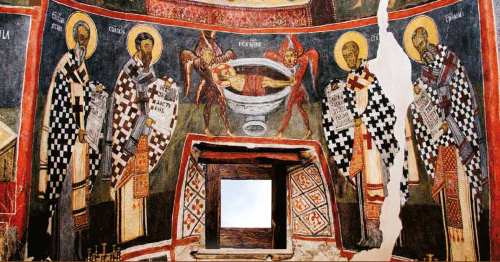Dragalevtsi Monastery of St Virgin Mary of Vitosha
This distinguished monastery is located in beautiful natural surroundings on the northern slope of Vitosha Mountain, 2 km away (along a good road) from Dragalevtsi quarter, Sofia. Founded in the mid-14th century by Tsar Ivan Alexandar, its privileges were confirmed in the gold-sealed Vitosha Deed of Tsar Ivan Shishman. 
continuous monastic tradition. In the 17th and 18th centuries the St Virgin Mary Church was decorated with new frescos. The iconostasis was done by masters from Sofia in the late 18th century, while most of the icons in the church date from the 19th century and were painted by local and Samokov icon painters. In the 1870s, under the secular-minded Father Superior Genadiy, the monastery literally bubbled with revolutionary zest with the notable involvement of Vasil Levski. In the 20th century, a new church was attached on the north side of the old small one, both sharing the same roof. This clever decision helped the old church survive. Its frescoes from the 15th century are the work of local icon painters. They comprise the oldest surviving post-Byzantium fresco ensemble in Sofia Holy Mount. 17th century frescoes are still in place on the northern outer side of the old church, which forms the southern inner wall of the new church.
The glorious Vitosha Mountain scenery and the easy access from Sofia turned Dragalevtsi Monastery into a favourite spot of Sofia’s elite for picnicking and day trips as early as the late 1800s. Today’s residential wings were erected in the 20th century and the patriarchal residence on the southern side is reminiscent of the monastery’s former privileged status. Dragalevtsi monastery is an active nunnery and at weekends hundreds of Christians choose this monastery to have their children baptized.






